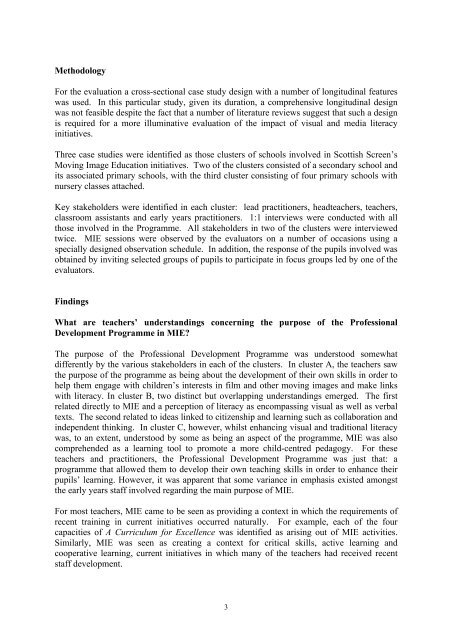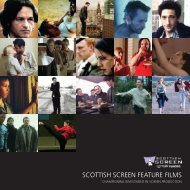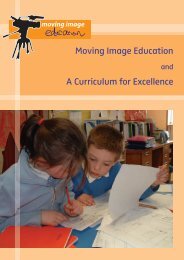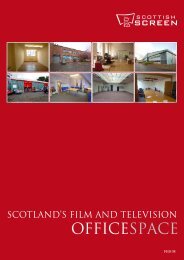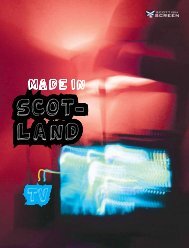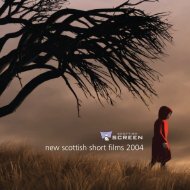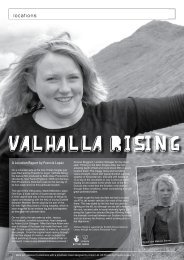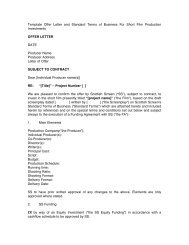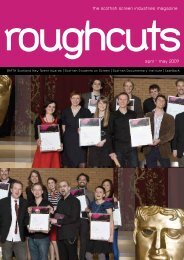Evaluation - Scottish Screen
Evaluation - Scottish Screen
Evaluation - Scottish Screen
Create successful ePaper yourself
Turn your PDF publications into a flip-book with our unique Google optimized e-Paper software.
Methodology<br />
For the evaluation a cross-sectional case study design with a number of longitudinal features<br />
was used. In this particular study, given its duration, a comprehensive longitudinal design<br />
was not feasible despite the fact that a number of literature reviews suggest that such a design<br />
is required for a more illuminative evaluation of the impact of visual and media literacy<br />
initiatives.<br />
Three case studies were identified as those clusters of schools involved in <strong>Scottish</strong> <strong>Screen</strong>’s<br />
Moving Image Education initiatives. Two of the clusters consisted of a secondary school and<br />
its associated primary schools, with the third cluster consisting of four primary schools with<br />
nursery classes attached.<br />
Key stakeholders were identified in each cluster: lead practitioners, headteachers, teachers,<br />
classroom assistants and early years practitioners. 1:1 interviews were conducted with all<br />
those involved in the Programme. All stakeholders in two of the clusters were interviewed<br />
twice. MIE sessions were observed by the evaluators on a number of occasions using a<br />
specially designed observation schedule. In addition, the response of the pupils involved was<br />
obtained by inviting selected groups of pupils to participate in focus groups led by one of the<br />
evaluators.<br />
Findings<br />
What are teachers’ understandings concerning the purpose of the Professional<br />
Development Programme in MIE?<br />
The purpose of the Professional Development Programme was understood somewhat<br />
differently by the various stakeholders in each of the clusters. In cluster A, the teachers saw<br />
the purpose of the programme as being about the development of their own skills in order to<br />
help them engage with children’s interests in film and other moving images and make links<br />
with literacy. In cluster B, two distinct but overlapping understandings emerged. The first<br />
related directly to MIE and a perception of literacy as encompassing visual as well as verbal<br />
texts. The second related to ideas linked to citizenship and learning such as collaboration and<br />
independent thinking. In cluster C, however, whilst enhancing visual and traditional literacy<br />
was, to an extent, understood by some as being an aspect of the programme, MIE was also<br />
comprehended as a learning tool to promote a more child-centred pedagogy. For these<br />
teachers and practitioners, the Professional Development Programme was just that: a<br />
programme that allowed them to develop their own teaching skills in order to enhance their<br />
pupils’ learning. However, it was apparent that some variance in emphasis existed amongst<br />
the early years staff involved regarding the main purpose of MIE.<br />
For most teachers, MIE came to be seen as providing a context in which the requirements of<br />
recent training in current initiatives occurred naturally. For example, each of the four<br />
capacities of A Curriculum for Excellence was identified as arising out of MIE activities.<br />
Similarly, MIE was seen as creating a context for critical skills, active learning and<br />
cooperative learning, current initiatives in which many of the teachers had received recent<br />
staff development.<br />
3


